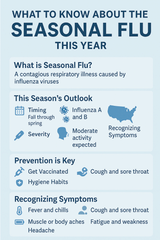Top Trends in Healthcare Supply Chain Management in 2024
The healthcare industry continues to evolve rapidly, and with that evolution comes the need for efficient, agile, and technology-driven supply chains. Managing healthcare supply chains has always been a complex endeavor, requiring a balance of cost-efficiency, regulatory compliance, and the ability to deliver high-quality care. In 2024, these demands have intensified, pushing organizations to adopt new strategies and technologies to stay ahead.
In this blog post, we’ll dive into the top trends shaping healthcare supply chain management in 2024 and how businesses can stay competitive in an ever-changing landscape.
1. AI and Machine Learning in Predictive Analytics
Artificial Intelligence (AI) and machine learning are revolutionizing how healthcare organizations manage their supply chains. Predictive analytics powered by AI allows organizations to forecast demand with greater accuracy, minimize wastage, and optimize inventory levels. These technologies can process massive amounts of data, such as patient trends, seasonal variations, and external market factors, to provide actionable insights.
For example, a healthcare facility can predict when a spike in demand for flu vaccines will occur and ensure that sufficient stock is available ahead of time. AI-driven predictive analytics reduces the risks of both stockouts and overstocking, leading to more efficient resource allocation.
2. Blockchain for Enhanced Transparency and Security
Blockchain technology is gaining significant traction in healthcare supply chains, providing transparency, security, and traceability throughout the entire lifecycle of a product. In 2024, more healthcare organizations are leveraging blockchain to ensure the authenticity of medical supplies, reduce counterfeit products, and track every step of a product's journey from manufacturer to patient.
With blockchain, every transaction or movement of goods is recorded in an immutable ledger, providing end-to-end visibility. This enhanced traceability not only helps in preventing fraud but also simplifies regulatory compliance, especially with increasingly stringent healthcare regulations.
3. Increased Focus on Sustainability
Sustainability has become a key priority for healthcare supply chains in 2024. From eco-friendly packaging to reducing carbon footprints, healthcare organizations are being pressured by consumers, governments, and investors to adopt more sustainable practices. The trend toward sustainability is driven by both corporate social responsibility (CSR) initiatives and the growing recognition that sustainable practices can also lead to cost savings.
One way that healthcare organizations are achieving this is by transitioning to reusable medical supplies where feasible and optimizing logistics routes to cut down on emissions. Partnering with suppliers who share a commitment to sustainability is also a rising practice in the industry.
4. Resilient and Agile Supply Chains
The COVID-19 pandemic revealed vulnerabilities in healthcare supply chains, particularly in times of crisis. In response, organizations have begun to build more resilient and agile supply chains that can better withstand disruptions. This includes diversifying suppliers, increasing local sourcing, and utilizing flexible distribution models.
In 2024, healthcare businesses are adopting technologies like digital twin modeling to simulate different supply chain scenarios. This helps them identify weak points and optimize their networks to respond quickly to unforeseen challenges, such as natural disasters or global pandemics.
5. The Rise of 3D Printing for On-Demand Medical Supplies
3D printing technology is becoming a game-changer in healthcare supply chain management. In 2024, healthcare facilities and suppliers are increasingly using 3D printing to produce medical supplies and devices on demand. This trend is especially significant for custom-made prosthetics, surgical tools, and even bioprinted organs.
The benefits of 3D printing include shorter lead times, reduced dependency on traditional manufacturing processes, and the ability to quickly produce products based on immediate needs. This reduces inventory costs and provides a reliable source of essential medical supplies in times of emergency or peak demand.
6. Greater Adoption of Cloud-Based Supply Chain Platforms
Cloud computing is transforming healthcare supply chain management by providing real-time data access, improving collaboration across the supply chain, and enhancing the scalability of operations. In 2024, cloud-based platforms have become more robust and integrated, allowing healthcare providers to manage their supply chains from a single dashboard.
These platforms provide visibility into inventory levels, supplier performance, and logistics, helping organizations to make data-driven decisions. With real-time updates and automated workflows, cloud-based systems ensure that healthcare facilities can respond quickly to changes in demand and supply conditions.
7. RFID and IoT for Real-Time Tracking
The use of Radio Frequency Identification (RFID) and the Internet of Things (IoT) in healthcare supply chains continues to rise in 2024. These technologies offer real-time tracking of medical supplies, ensuring that inventory levels are always accurate, and enabling healthcare providers to locate critical items quickly.
For instance, RFID tags can track medical equipment such as ventilators and wheelchairs throughout a hospital, while IoT sensors can monitor the temperature and condition of pharmaceuticals during transit. This level of visibility reduces the risk of lost or expired products and ensures that healthcare facilities can maintain compliance with storage and transportation requirements.
8. Telehealth and Remote Care: Impact on Supply Chains
The rise of telehealth and remote care services has had a significant impact on healthcare supply chains. In 2024, more patients are receiving medical care at home, which has led to an increased demand for home healthcare devices, monitoring equipment, and direct-to-patient delivery services.
Healthcare supply chains now need to accommodate this shift by ensuring that medical supplies can be delivered promptly to patients' homes. This requires enhanced coordination between suppliers, healthcare providers, and logistics companies to meet delivery expectations without compromising patient care.
9. Data-Driven Decision Making with Advanced Analytics
Data-driven decision-making is key to optimizing healthcare supply chains in 2024. With access to large volumes of data, healthcare organizations can use advanced analytics to track performance metrics, forecast demand, and identify areas for improvement. This not only helps in making more informed decisions but also boosts the overall efficiency of supply chain operations.
Advanced analytics tools can analyze everything from inventory turnover rates to supplier performance, allowing businesses to spot trends, make proactive adjustments, and improve overall supply chain resilience.
10. Outsourcing Supply Chain Functions
In 2024, many healthcare organizations are outsourcing certain supply chain functions to third-party logistics providers (3PLs) and specialized service providers. This trend allows healthcare organizations to focus on their core competencies—patient care—while leaving the complexities of supply chain management to external experts.
Outsourcing can also provide cost benefits, as 3PLs often have better infrastructure, technology, and expertise to handle logistics, warehousing, and inventory management. Additionally, outsourcing reduces the burden of regulatory compliance and risk management for healthcare organizations.
Conclusion
The healthcare supply chain landscape in 2024 is more dynamic and complex than ever before. To stay competitive and meet the growing demands of the industry, healthcare organizations must embrace technological advancements, focus on sustainability, and build resilient, agile supply chains. By staying ahead of these trends, healthcare providers can ensure they deliver high-quality care while optimizing costs and improving overall operational efficiency.
As the healthcare industry continues to evolve, those who proactively adopt these trends will be well-positioned for long-term success.
Truway Health News & Insights
Breathe, Refuel, Recharge: Finding Your Daily Balance
Written by Perry JohanssenPublished and Edited by Truway Health Life rarely slows down on its own. B...
Truway Health Launches “ImmuneNet”: A New Era in Quantum-Synaptic Immunotherapy
Reimagining How Immunity Can Be Understood and Guided At Truway Health, innovation never sleeps.Toda...
Announcing the HEALTH Trial: Humanoid Evaluation and Learning in Healthcare
Published by Truway Health, Inc.Principal Investigator: Gavin SolomonClinicalTrials.gov Identifier:...
We’re thrilled to launch our first-ever clinical trial of TruDxPc
Study Identification Protocol ID: TRHW-DX-001 Brief Title: Truway Diagnostic Tools in Primary Ca...
What to Know About the Seasonal Flu This Year
As cooler weather sets in, flu season returns. Each year brings new strains, evolving guidance, and...
Gamification and Health: Turning Wellness Into a Daily Game
Introduction For many people, staying healthy feels like a chore: eating clean, exercising regularly...







